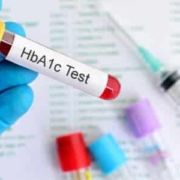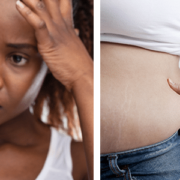Preventing Loss of Muscle Mass on Ozempic or Wegovy
The press surrounding the ‘miracle’ weight loss drugs Ozempic and Wegovy have put them on everybody’s radar. Suddenly, almost every celebrity on the red carpet is slim and trim – and everyday people are rushing to their doctors to get a prescription for this new ‘wonder drug.’
Semaglutide (the active ingredient in Ozempic or Wegovy) is a medication originally used to treat Type 2 Diabetes and is now FDA approved for weight loss in obese individuals. Its popularity is based on how effective it is in rapidly reducing body weight and improving metabolic parameters.
However, like anything in life, there are no ‘magic’ cures. Like any medication, semaglutide can have side effects. And one such side effect to Ozempic and Wegovy use is loss of muscle mass.
In this article Austin, TX integrative medicine doctor and weight loss expert Dr. Ruthie Harper, explains how to use Ozempic and Wegovy (semaglutide) safely – to ensure you do not experience dangerous loss of muscle mass.
How Ozempic & Wegovy Cause Loss of Muscle Mass
Semaglutide is a medication that works by reducing appetite and increasing feelings of fullness. It is a glucagon-like peptide-1 (GLP-1) receptor agonist that mimics the effects of the hormone GLP-1, which is naturally produced by the body in response to food. GLP-1 is involved in regulating glucose metabolism, appetite, and energy expenditure.
While semaglutide has been shown to be effective in promoting weight loss, it can also have side effects, including loss of muscle mass. This is because semaglutide can reduce energy intake too much or too quickly, which can lead to a decrease in muscle protein synthesis. In addition, semaglutide can decrease insulin levels too much, which can also contribute to muscle loss.
The Dangers of Ozempic or Wegovy Loss of Muscle Mass
Muscle mass is important for overall health and physical function. It plays a crucial role in metabolic health, bone density, and strength. Loss of muscle mass can lead to a variety of health problems, including decreased metabolic rate critical for the ability to consume normal amounts of food after finishing your weight loss program.
Muscle mass is also important for strength, mobility, and for prevention of falls, fractures, and other injuries.
Maintaining Muscle Mass on Ozempic or Wegovy
To prevent loss of muscle mass when using Ozempic or Wegovy, it is important to have a DEXA scan prior to using semaglutide. It is also essential to work with a weight loss doctor like Ruthie Harper, MD who can calculate and recommend adequate amounts of protein and other macronutrients while using this drug.
DEXA stands for Dual-energy X-ray absorptiometry. It is a medical imaging technique that uses X-rays to measure bone density, body composition, and muscle mass. A DEXA scan is a simple and painless procedure that can provide valuable information about an individual’s body composition and overall health, including their muscle mass and bone density.
By monitoring muscle mass with DEXA scans, your physician can adjust treatment as needed to prevent muscle loss and promote overall health.
Preventing Muscle Mass Loss on Ozempic or Wegovy
In addition to monitoring muscle mass, there are other strategies that can be used to prevent muscle loss with semaglutide. These include:
1. Resistance training: Resistance training is a form of exercise that involves using weights or resistance bands to strengthen and build muscle. It is important to engage in regular resistance training to maintain muscle mass and prevent muscle loss while using semaglutide.
2. Protein intake: Protein is essential for muscle growth and maintenance. It is important to consume adequate amounts of protein to support muscle health. The amount of protein needed varies depending on an individual’s age, weight, and activity level and should be specifically calculated by your physician.
3. Adequate caloric intake: While semaglutide works by reducing appetite, it is important to consume enough calories to support muscle health. You physician can work with you to develop a nutrition plan that supports muscle health while promoting weight loss.
4. Vitamin D and calcium intake: Vitamin D and calcium are important for bone health and muscle function. It is important to measure levels of these important nutrients and consume adequate amounts of these nutrients to support overall health.
Semaglutide (Ozempic / Wegovy) Weight Loss Doctor | Austin, TX
While semaglutide is an effective medication for weight loss, it can have undesirable and serious side effects, including loss of muscle mass. To prevent muscle loss, it is important to have ongoing DEXA scans to monitor muscle mass and adjust your weight loss treatment plan as needed.
In addition, integrative medicine doctor and weight loss expert Dr. Ruthie Harper, MD will work with each individual patient to put together a comprehensive treatment plan that ensures muscle mass is maintained. This may include engaging in regular resistance training, consuming adequate protein and calories, and consuming adequate amounts of vitamin D and calcium.
By taking a comprehensive approach to health and wellness, Dr. Ruthie Harper, MD in Austin, TX works with each individual patient to help them achieve their weight loss goals while maintaining muscle mass and promoting overall health.






